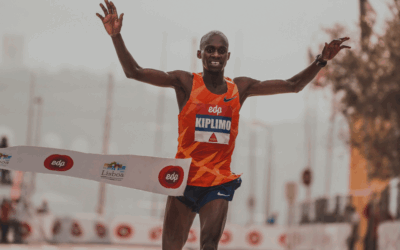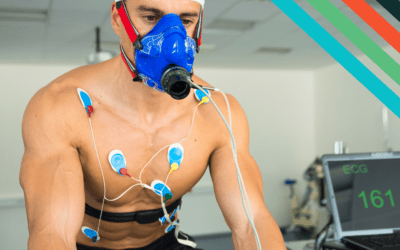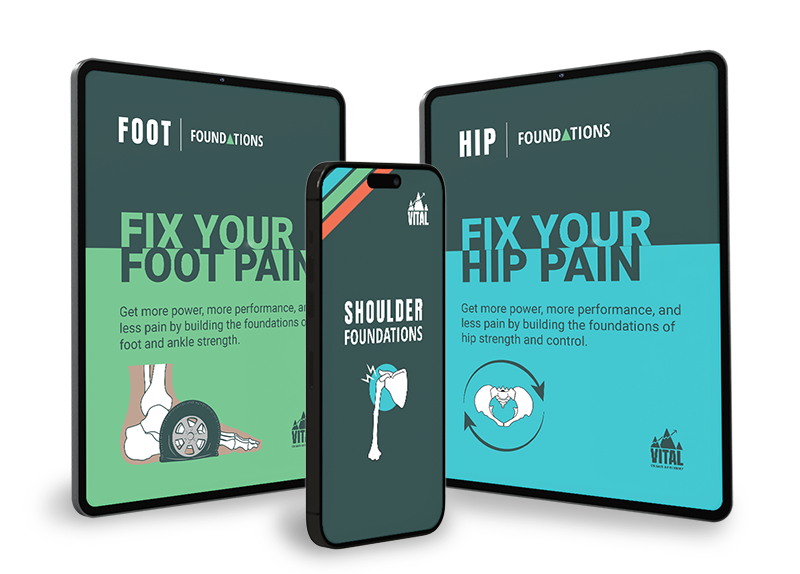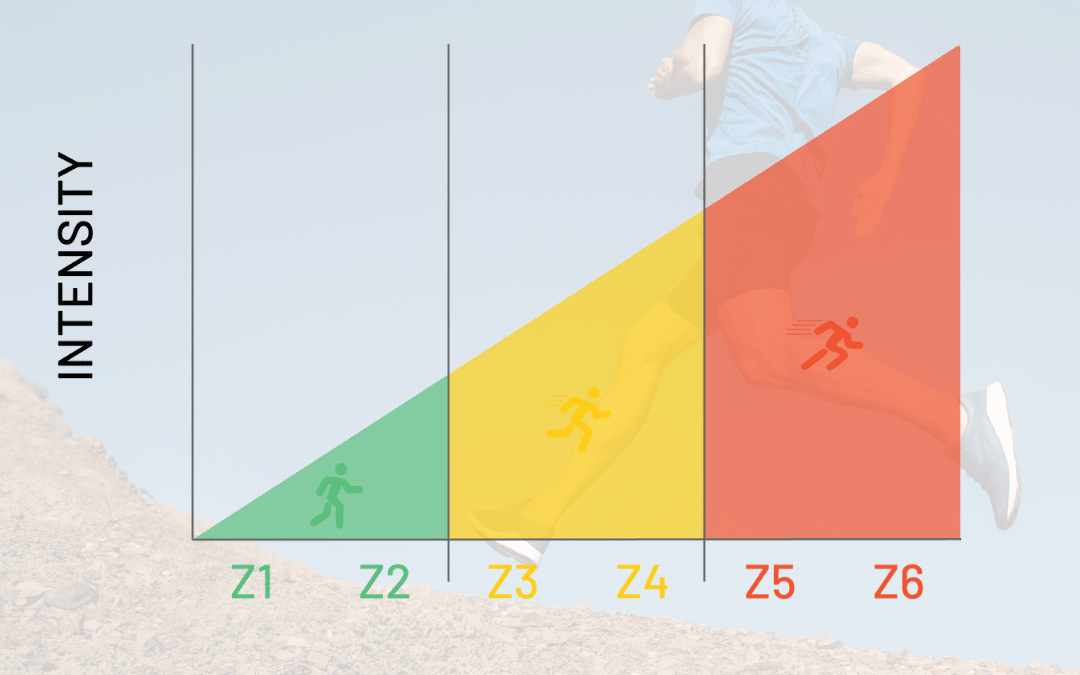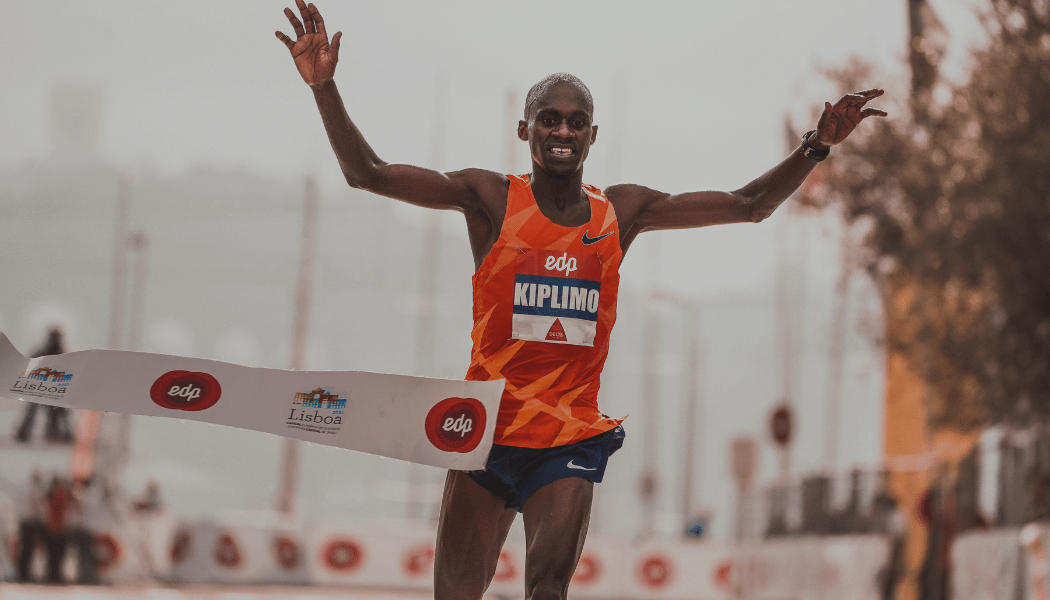Quick Navigation
- Introduction
- What is the Anaerobic Threshold?
- Free Lactate Testing eBook
- How to find the Anaerobic Threshold?
- Do all sports train the Anaerobic system?
- What is the difference between Anaerobic Threshold, MLSS, and CP?
- How can we track changes over time?
- How much is the Anaerobic Threshold supposed to change over time?
- What types of workouts can I do to improve my anaerobic threshold?
- Sample Anaerobic threshold workouts!
- Health Benefits of Anaerobic Training
- Conclusion
- Additional resources
- About the author
- References
Introduction
Exercise physiologists have long used thresholds as a way to measure transitions through exercise intensities, to quantify changes in fitness over time, and to evaluate metabolism in humans.
The boundary between sustainable and unsustainable endurance exercise represents the anaerobic threshold, or the notion of a “critical metabolic rate” that exercise could be tolerated for long durations. Despite the prevalent use of thresholds to quantify exercise prescriptions, seen most commonly in running, cycling, and triathlon coaching these days, actually finding your anaerobic threshold, and figuring out how to get better at training at those intensities, is the thing people struggle with most.
Confusing terminology doesn’t help – with terms like maximal lactate steady state (MLSS), critical power (CP), respiratory compensation point (RCP), de-oxyhemoglobin breakpoint (HHb), onset of blood lactate accumulation (OBLA), ventilatory or lactate thresholds (VT, LT), or even just “THRESHOLD” attempting to describe the same or similar points in our physiology, things get CONFUSING.
So – let’s clarify the anaerobic threshold once and for all, and if you’re left with a nagging sense you need more help – check out how we can help HERE.
What is Anaerobic Threshold?
Many different names
Often people refer to their “threshold” in the running world. But, as exercise physiologists, we know that there are actually at least two thresholds, the aerobic threshold and the anaerobic threshold, both with different purposes, physiologies, and work loads.
We wrote about the aerobic threshold, but it is often confused with the anaerobic threshold. Too often, coaches and clients will just say “threshold” and when they say this, they typically mean their anaerobic threshold. This threshold has many disguises, such as “the second ventilatory threshold”, “VT2”, “the second lactate threshold”, “LT2”, “maximum lactate steady state (MLSS)”, “critical power (CP)” or simply “threshold.” While not all of these occur at the exact same points – they often get blurred together as the same thing.
In this article, we explore the ins and outs of the anaerobic threshold and answer some of your best questions about the anaerobic threshold! Stay until the end to get some sample aerobic workouts you can try!
What is happening physiologically at anaerobic threshold?
Maximum lactate steady state (MLSS) is the corresponding workload or pace and highest blood lactate (Bla) concentration that can be maintained over time without a continual accumulation of lactate in the blood. Up to and including the power output at MLSS, the body metabolizes lactate via aerobic metabolism in the muscle, heart and the liver.
At higher intensities (above MLSS) a net Bla accumulation indicates unsustainable exercise, and the person exercising would certainly be limited by fatigue if they stayed at that intensity. Although there is conflict as to the length of time one can exercise at MLSS (up to the length of a marathon, and more commonly around an hour), the stringency of its measurement and definition are key to the debate.
Physiologically, it represents equal glycolytic rate (or “anaerobic metabolic rate”) compared to aerobic metabolism, and fatigue at around this power output or pace indicates that glycogen is depleting/depleted or the anaerobic metabolic rate just can’t keep up to the energy demands.
Why does this matter?
Essentially, it matters and is helpful for us coaches and our athletes, because it marks a critical turning point between sustainable and unsustainable exercise.
If we can figure out where this intensity lies, we can make more specific predictions about how fast an athlete can race a particular race, and what speeds and heart rates they should be training at for various types of workouts to maximize the time they spend training. Pushing into unsustainable power outputs isn’t helpful if you’re expected to run for 45 minutes at a pace you can’t even sustain!
How to find anaerobic threshold
The one question most of you probably came here to answer. Where the heck is this elusive thing? How do I find mine?
Practically, you now understand that the anaerobic threshold marks the turn point between sustainable and unsustainable exercise. It’s generally agreed upon that that intensity could be sustained for 30-60 minutes of all-out activity. Have you raced a race that lasts between 30 to 60 minutes where you pushed yourself pretty hard? For runners, this might be a recent 5 or 10k race time. Whatever pace or power you averaged for that race is approximately right around your threshold.
Even if you’re not yet elite, or even if you are – but you don’t have elite access to testing, a good next question we can ask is, how can we find the anaerobic threshold? While there are many ways to find the anaerobic threshold, the best way is to test for it in a lab.
In exercise physiology labs, we run people through what is called an incremental exercise test. This means that they start exercising at a very easy pace, usually for 3 minutes, and we take information like their heart rate, their rated perceived exertion (RPE), their blood lactate, and sometimes also their oxygen consumption and carbon dioxide excretion. With this information, we create graphs that help us determine where the “inflection points” occurred in their effort. These inflection points (there are 2) represent aerobic threshold and anaerobic threshold.

The simplest way to estimate your threshold is with this scale:

Most people can use this scale to get a gauge during any continuous exercise session where their threshold is at. Below LT1 (aerobic threshold) they should feel like the exercise is approaching something that feels somewhat hard, and they should have a steady breathing rate of 4 counts in and 4 counts out. Closer to the LT2 (anaerobic threshold), they should feel like they are approaching very hard training, and their breathing rate should be closer to 2 counts in and 2 counts out. When the breathing rate changes to 1 count in and 1 count out, the person is likely over their anaerobic threshold, and the exercise will be unsustainable.
If you would rather use a time trial to get testing data on how your anaerobic threshold is improving, but don’t have any recent data on a hard 30-60 minute effort to gauge an approximation of your anaerobic threshold, you can perform time trials. Below are the various types you can use:
20 minute Time Trial
Find a quiet section of uninterrupted road, or a stationary trainer indoors (ideally a cycle ergometer), and (after a thorough warm up) ride as hard as you can for 20 minutes. Take your average power for the 20 minutes and subtract 5% to get your Threshold Power. For runners, you would use the average pace instead of power. We use this number to update our athletes training zones on Training Peaks.
30 minute Time Trial
This field test is identical to the previous one, except you ride for 30 minutes. This time, however, you will use the average power for the entire 30 minutes as your threshold power or pace.
If you don’t have the mental toughness or desire to push through either one of those grueling tests, but have access to lab testing in your city, another good way to test it is through lactate threshold testing. During a lactate threshold test, you don’t have to go to max effort, but rather the tester will sample your blood lactate (typically drawn via a small prick on the finger), as you exercise on a treadmill or bike in increasing intensities. Typically a blood lactate around 2.0mmol/L marks aerobic threshold and a blood lactate around 4.0mmol/L marks the anaerobic threshold, so coaches can use this information to update the athletes zones without maxing out! This is more sustainable as an all-year-round accurate threshold test.
Once you have your approximate anaerobic threshold pace, speed, RPE, and/or heart rate, you can set your training zones and start training. Unsure how best to do this? Drop us a line HERE for free advice.
Do all sports train the anaerobic system?
Table 1 shows a chart for the Anaerobic System Related to Various Sports and the relative contributions of the different energy systems in the body during a 100m sprint, a 1500m run, or a marathon.
As the sport becomes faster, there is a higher reliance on the anaerobic energy system, and as the sport becomes more purely aerobic, there is less reliance on the anaerobic energy system.

Even in sports like the marathon, where our Table 1 shows zero contribution from the anaerobic glycolysis system, there is likely actually some speed and kick needed towards the end of that race, so some development of faster turn over and energy production is likely really important.
Although most sports fall somewhere along a continuum of varying energy system contributions. Team sports like martial arts, racquet sports and court sports like volleyball tend to be characterized by intermittent activity. In these sports all three energy systems (ATP, Glycolysis, Aerobic) are used according to the intensity, rhythm and duration of the competition. Most of these sports use the anaerobic energy pathway during the active part of competition, but rely on strong aerobic power for quick recovery and regeneration between actions. As a result, the sport category requires a high proportion of training dedicated to improvement, maximum strength power and power endurance.

For the intermittent sports like volleyball or martial arts, it is likely less useful to know the athletes anaerobic threshold, and more useful to know other metrics related to their jump height, power, and capacity of their aerobic systems, than their anaerobic threshold. For athletes that spend a lot of time exercising cyclically and continuously (runners, cyclists, rowers, etc), the anaerobic threshold is more important, as a lot of time is spent in more continuous speeds and specific training zones. For this reason, the closer you get to the “Endurance” side of things in the graph above, the more important the anaerobic threshold is.
What is the difference between anaerobic threshold, MLSS, and CP?
Maximum lactate steady state (MLSS)
MLSS is the corresponding workload and highest blood lactate (Bla) concentration that can be maintained over time without a continual accumulation of lactate in the blood (Billat, Sirvent, Py, Koralsztein, & Mercier, 2003).
There is conflict as to the length of time one can exercise at MLSS (up to the length of a marathon, and more commonly around an hour), the stringency of its measurement and definition are likely key to the debate (Neupert, 2007). Physiologically, it represents equal glycolytic rate compared to pyruvate oxidation, and fatigue at MLSS is likely due to insufficiencies in glycogenolysis or glycogen depletion (Beneke et al., 2000; Neupert, 2007). To measure MLSS, typically multiple varying constant load tests are performed on different testing days at increasing intensities until a workload where Bla accumulates more or less continuously during the test (Beneke et al., 2000). It is common practice for these tests to last at least 30 minutes, and up to 45 minutes, while observing a lactate accumulation of no more than 1.2 mmol/L (and commonly 1.0 mmol/L), from the 10th testing minute to the end of the test as an indication of steady state lactate (Beneke, 2003).
Since these models for determining MLSS rely on the consistency of the subject to perform at a high level on multiple sessions, as well as the consistency and precision of the Bla measures, limitations do exist. Bla measuring devices have error of measurement of up to 0.5mmol/L (Tanner, Fuller, & Ross, 2010). Lastly, the amount of glycogen in the body, fatigue (depleted glycogen or raised sympathetic stimulation), and presence of catecholamines play a part in the amount of lactate the subject produces on a given day or at a given stage of the test (Stainsby & Brooks, 1990).
Critical Power (CP)
Critical power, often just called CP, is slightly different from the anaerobic threshold, but in some ways can be thought of as marking a similar point physiologically. CP corresponds to the maximum rate of work that a muscle group can maintain for extended periods of time without fatigue (Monod & Scherrer, 1965), or the highest rate of aerobic energy transduction that can be sustained without continuously drawing on anaerobic energy sources (Jones, Vantatelo, Burnley, Morton, & Poole, 2010).
To determine CP, multiple time to exhaustion (TTE) bouts are performed at workloads above lactate threshold, in order to model CP and anaerobic energy stores (AWC) (Monod & Scherrer, 1965). These multiple time trials are harder to run in a reliable and accurate manner in the real world of coaching, so often we rely on testing to determine an approximate anaerobic threshold to design training around.
CP is said to me modeled on a mathematical basis that might be less physiological and more mechanistic, one potential limitation of the model. Other criticisms of CP modeling include that multiple tests to volitional fatigue are taxing on the subject and require not only minimal pre-test fatigue, but also high amounts of motivation (Jones et al., 2010). Additionally, variations in repeated performances are larger when durations are longer, thus further complicating translation of a mathematical model to a true CP (Morton, 2006).
Recommendations for using MLSS vs CP
CP prediction is useful for performances above steady state or for short-term anaerobic work predictions, whereas MLSS is more useful as a physiological measure of anaerobic threshold and the power that can be sustained for long periods of time. If the primary reason for studying CP and MLSS is to locate an exercise intensity that is sustainable potentially for very long periods of time, then it must be both accurate, and at or below anaerobic threshold.
The measurement of MLSS is physiological, and affected by numerous external factors due to its physiological nature, whereas CP is a calculated prediction from a model, but also affected by numerous limitations. Currently, CP does not appear to represent the maximal intensity of exercise that can be sustained for long periods of time, whereas MLSS demonstrated this pursued trend.
So, lucky for you, doing a lactate threshold test or time trial does currently appear to be the best way to find your anaerobic threshold and base your training zones off of!
How can we track changes in our anaerobic threshold over time?
The best way to track changes in your anaerobic threshold over time is to perform regular anaerobic threshold tests, either in a laboratory setting or through field testing. This can include:
- Laboratory testing: Performing a treadmill or stationary bike test under controlled conditions, measuring heart rate, oxygen consumption, and carbon dioxide production to determine your anaerobic threshold.
- Field testing: Performing a time-to-exhaustion or time-trial test, measuring your heart rate at a set intensity, to estimate your anaerobic threshold.
In both cases, it’s important to maintain consistency in your testing protocol, and to perform the test under similar conditions each time in order to accurately track changes over time. Additionally, regularly monitoring other markers of fitness such as heart rate, power output, and running pace can also give insight into changes in your anaerobic threshold, which in practice, can be done weekly by an endurance coach.
How much is the anaerobic threshold supposed to change over time?
The amount that the anaerobic threshold can change over time can vary greatly based on various factors such as training frequency, intensity, and duration, nutrition, and overall fitness level.
In general, anaerobic threshold can improve with consistent, progressive training, as the body becomes better at using oxygen to produce energy. This can lead to an increase in the anaerobic threshold, allowing the individual to exercise at a higher intensity before reaching the point of fatigue. We typically see our athletes experience changes in their thresholds every few months when training is going well.
Examples of the types of improvements in anaerobic threshold seen in the literature include:
- The effects of five weeks of interval training at maximal work and at the anaerobic threshold in 11 year old children have been studied, using interval work at 25 and 50% above the anaerobic threshold (Hoffor et al, 1990). Following training, the children increased their anaerobic threshold significantly by 22%, while VO2max was increased by 19%.
- Burke et al (1994) observed that a 7 week high intensity aerobic interval-training programme (at 80%, 90% and 95% VO2max) can produce significant changes in VO2max, lactate threshold and ventilatory anaerobic threshold and these changes appear to be independent of the length of the work interval.
- Training at 80% VO2 max for 9 weeks duration can increase the anaerobic threshold level significantly (Ready et al, 1982).
On the other hand, if training is decreased or discontinued, the anaerobic threshold can decline. Additionally, factors such as age, illness, injury, and stress can also impact the anaerobic threshold, leading to either a decline or improvement.
It’s important to keep in mind that changes in the anaerobic threshold can occur gradually over time, and the exact amount of change can vary from individual to individual.
What types of workouts can I do to improve my anaerobic threshold?
Improving your anaerobic threshold can allow you to exercise at a higher intensity for longer periods of time, leading to improved performance and increased endurance. There are a variety of workout types and exercises that can help you improve your anaerobic threshold, including high-intensity interval training, strength training, and endurance training. Whether you are a competitive athlete or simply looking to improve your fitness level, incorporating these types of workouts into your training regimen can help you reach your goals and improve your anaerobic threshold.
What would a sample week look like if we were to lay out some anaerobic training within a full week of running?

In this sample week of training, a sample runner that trains 5 days per week with approximately 9.5 hours/week of running, might only have 1 day in their plan (Wednesday in the example) that includes Zone 4 work, or “threshold training”. Threshold training is typically performed in longer chunks, so you can see in our example we used 15 minute intervals at Zone 4 repeated 4 times between easier rest periods.
Though the Wednesday training in this sample week is an example of a specific work out where you would train right at the anaerobic threshold, there is evidence that the anaerobic threshold can be increased even with “easy” or “aerobic training” (marked by the green Zone 1 training above).
Aerobic training is characterized by low to moderate intensity exercise that is performed for extended periods of time, typically 30 minutes or more. This type of training helps to increase the body’s ability to utilize oxygen, which can lead to an increase in the anaerobic threshold.
Studies have shown that regular aerobic training can improve cardiovascular function, increase the volume of blood the heart pumps, and increase the efficiency of the muscles’ ability to use oxygen. These adaptations can result in a higher anaerobic threshold, allowing individuals to exercise at a higher intensity before reaching the point of fatigue.
It’s important to note that while easy or aerobic training can play a role in improving the anaerobic threshold, it’s typically only one piece of the puzzle. A well-rounded training program that includes a combination of aerobic, anaerobic, and strength training is often the most effective way to improve athletic performance and increase the anaerobic threshold. For this reason, even the Tuesday and Saturday workouts in our example above, where the intervals are done above anaerobic threshold, can help to increase our anaerobic threshold, too.
Sample anaerobic threshold workouts
Want to try out an anaerobic threshold workout? First, estimate your anaerobic threshold. A rule of thumb I was once taught was to start with your maximum heart rate and to subtract 15-20 beats. If you have a max heart rate of 190 bpm (beats per minute), 15-20 beats below that puts your estimated anaerobic threshold around 170-175 bpm. Alternatively, scroll back up in this blog and choose a 20 or 30 minute time trial and use the calculations we outlined above to estimate the pace or power where your threshold likely lies.
Another way is to use the traditional method and use 70-85% of your max heart rate. In order to find your max heart rate, you would need to strap on a heart rate monitor, and do a very hard effort of continuous exercise over 3 minutes or so (as heart rate sometimes takes awhile to reach its peak, even when the effort is super high). You could also estimate your max heart rate using 220 – your age. A 30 year old’s maximum heart rate might sit around 190 bpm with this formula.
My max heart rate is around 195 bpm, so with the traditional method, the math to calculate my range of anaerobic threshold would be:
195*0.70 = 137 bpm
195*0.85 = 166 bpm
If I go with the method of subtracting 15-20 beats from my max heart rate, that gives me a heart rate range of 175-180 bpm which is a little different from the % based calculator. Most of the endurance athletes I have tested do have their anaerobic threshold around 150-170 bpm but that doesn’t mean the same is necessarily true for you. The best way to test your anaerobic threshold is in a lab setting, with blood lactate being measured, so that the physiologist can tell exactly when you go from sub-threshold, to between aerobic and anaerobic threshold!
Next, use some of these workouts to help improve your anaerobic threshold:
- Continuous anaerobic training or Tempo
- Good for testing your anaerobic threshold, or for simply including a key workout in your training plan that helps you to push and feel your “tempo pace” at anaerobic threshold. It should be noted that this “tempo pace” at anaerobic threshold is usually a little slower than true race pace, but because racing is mentally and physically demanding, practicing tempo as a staple workout in your training can be more feasible.
- Do this at approx 78% MAP (maximal aerobic power or power at VO2max) or at approx 70-85% of max heart rate
- The workout is 30 to 60 minutes with short 10-60 second rests or no rests
- Progressive Run or Ride
- This workout is good for getting really comfortable knowing your paces around aerobic to anaerobic threshold, and for getting comfortable with the faster turn over, pushing the pace when you’re already tired, and feeling of hitting paces that you will be hitting in races
- Start at aerobic threshold (approx 70% MAP or 65-75% of max heart rate), and progressively increase towards anaerobic threshold (approx 78% MAP or 70-85% of max heart rate) throughout the workout
- The workout length is between 40 to 60 minutes long
- Long Intervals above anaerobic threshold
- These workouts are good for pulling your anaerobic threshold upwards, through shorter intervals at a higher intensity.
- This workout should be done at approx 90% MAP (maximal aerobic power or power at VO2max) or approx 85-95% of max heart rate
- Do 20-40 minute blocks of hard efforts with short rests in between
- Short VO2max Intervals above anaerobic threshold
- These workouts are good for pulling your anaerobic threshold upwards, through even shorter intervals at a higher intensity.
- This workout should be done at 100% MAP (maximal aerobic power or power at VO2max) or approx 95-100% of max heart rate
- Repeat 4-6 max efforts of 3-6 minutes each, resting 2-3 minutes between efforts.
- Intervals at anaerobic threshold
- These workouts are my personal favourite, and great for getting you used to pushing the pace for longer periods of time right around your anaerobic threshold. These are great for pushing your anaerobic threshold upwards, and getting used to the discomfort at this threshold
- This workout should be done at 70-85% MAP (maximal aerobic power or power at VO2max) or approx 80-90% of max heart rate
- Repeat 3-6 controlled hard efforts at a pace you could hold for 1 hour (of hard running) at 4-12 minutes each, resting 2-5 minutes between efforts.
Health benefits of anaerobic threshold training
Anaerobic threshold workouts are not just for athletes or for those training seriously for a race goals. Increasing your anaerobic threshold has several health benefits, including:
- Improved cardiovascular health: By exercising at a higher intensity, the heart and lungs are challenged to work more efficiently, leading to improved cardiovascular health and a lower risk of heart disease.
- Increased endurance: With a higher anaerobic threshold, you can exercise at a higher intensity for longer periods of time, leading to increased endurance and improved athletic performance.
- Better calorie burning: Exercising at a higher intensity leads to an increase in calorie burning, making it easier to maintain a healthy weight or lose weight.
- Reduced risk of chronic diseases: Regular exercise at a high intensity has been shown to lower the risk of chronic diseases such as diabetes, obesity, and certain types of cancer.
- Improved mental health: Exercise at a high intensity has been shown to improve mood, reduce stress, and boost self-esteem, leading to improved mental health.
- Better overall fitness: With a higher anaerobic threshold, you can perform a wider range of physical activities with greater ease, leading to improved overall fitness and a higher quality of life.
It’s important to note that increasing the anaerobic threshold should be done gradually, with the guidance of a qualified healthcare professional, to minimize the risk of injury and ensure the best possible outcome.
Conclusion
In conclusion, the anaerobic threshold is an important physiological marker for athletes and fitness enthusiasts alike. By understanding what the anaerobic threshold is and how to find it, individuals can train more effectively to improve their athletic performance. Not all sports solely train the anaerobic system, but incorporating anaerobic training into a workout regimen can bring numerous benefits. To track changes over time, we recommended periodically re-assessing one’s anaerobic threshold and adjusting training accordingly. While the anaerobic threshold can and should change over time with consistent training, it is important to remember that progress takes time and consistent effort. To improve one’s anaerobic threshold, specific types of workouts such as high-intensity interval training or strength training can be incorporated into a training regimen. Ultimately, understanding and training the anaerobic threshold can lead to improved athletic performance and overall fitness.
If you need help with your training, reach out to us at any time.
Additional Resources
Here is a link to 3 of my top books that I used in learning these concepts for the first time, that I would highly recommend scanning if you’re a student interested in learning more about the physiology behind these thresholds:
- SUPERTRAINING by Mel Siff and Yuri Verkhoshansky
- PERIODIZATION TRAINING FOR SPORTS by Tudor Bompa and Carlo Buzzichelli
- JACK DANIELS RUNNING FORMULA by Jack Daniels
References
Asuda, K. A. Y. (2007). Relationship Between Optimal Lactate Removal Power Output and Olympic Triathlon Performance, 21(4), 1238–1244.
Beneke, R. (2003). Methodological aspects of maximal lactate steady state—implications for performance testing. European Journal of Applied Physiology, 89(1), 95–99. doi:10.1007/s00421-002-0783-1
Beneke, R., Utler, M. H., & Auser, R. M. L. (2000). Maximal lactate-steady-state independent of performance ¨ ¨. Medicine and Science in Sports and Exercise, 32(6), 1135–1139.
Billat, L., Sirvent, P., Py, G., Koralsztein, J., & Mercier, J. (2003). The Concept of Maximal Lactate Steady State: A Bridge Between Biochemistry , Physiology and Sport Science. Journal of Sports Medicine, 33(6), 407–426.
Burke J., Thayer R., and Belcamino M. Comparison of effects of two interval-training programmes on lactate and ventilatory thresholds. Br J Sports Med 1994; 28(1): 18-21.
Dekerle, J., Baron, B., Dupont, L., Vanvelcenaher, J., & Pelayo, P. (2003). Maximal lactate steady state, respiratory compensation threshold and critical power. European Journal of Applied Physiology, 89(3), 281–288. doi:10.1007/s00421-002-0786-y
Henritze J., Weltman A., Schurrer R.L. and Barlow K. Effects of training at and above the lactate threshold on the lactate threshold and maximal oxygen uptake. Eur J Appl Physiol Occup Physiol 1985; 54(1): 84-88.
Hill, D. W. (1993). The Critical Power. The Lancet, 230(4), 1166. doi:10.1016/S0140-6736(00)88507-4
Hoffor A.S., Harrison A.C. and Kirk P.A. Anaerobic threshold alterations caused by interval training in 11- year-olds. J. Sports Med. Phys. Fit. 1990; 30(1): 53- 56.
Jones, A. M., Vanhatalo, A., Burnley, M., Morton, R. H., & Poole, D. C. (2010). Critical power: Implications for determination of ⊙ O2max and exercise tolerance. Medicine and Science in Sports and Exercise, 42, 1876–1890. doi:10.1249/MSS.0b013e3181d9cf7f
Jones, A. M., Vantatelo, A., Burnley, M., Morton, R. H., & Poole, D. C. (2010). Critical Power: Implications for Determination of VO2max and Exercise Tolerance. Medicine & Science in Sports & Exercise, 42(10), 1876–1890. doi:10.1249/MSS.0b013e3181d9cf7f
Keir, D. a., Fontana, F. Y., Robertson, T. C., Murias, J. M., Paterson, D. H., Kowalchuk, J. M., & Pogliaghi, S. (2015). Exercise Intensity Thresholds. Medicine & Science in Sports & Exercise, (December 2014), 1. doi:10.1249/MSS.0000000000000613
Keir, D. a., Murias, J. M., Paterson, D. H., & Kowalchuk, J. M. (2014). Breath-by-breath pulmonary O2 Uptake kinetics: effect of data processing on confidence in estimating model parameters. Experimental Physiology, 99, 1511–1522. doi:10.1113/expphysiol.2014.080812
Keith, S. P., Jacobs, I., & Mclellan, T. M. (2000). Applied Physiology Adaptations to training at the individual anaerobic threshold. European Journal of Applied Physiology, (1992), 316–323.
Lamberts, R. P., Swart, J., Noakes, T. D., & Lambert, M. I. (2011). A novel submaximal cycle test to monitor fatigue and predict cycling performance. British Journal of Sports Medicine, 45(10), 797–804. doi:10.1136/bjsm.2009.061325
Lamberts, R. P., Swart, J., Richard, W., Hons, M., Noakes, T. D., & Lambert, M. I. (2009). Measurement error associated with performance testing in well- trained cyclists : Application to the precision of monitoring changes. International SportMed Journal, 10(1), 33–44.
Medicine, A. C. of S. (2006). ACSM’s guidelines for exercise testing and prescription. In ACSM’s guidelines for exercise testing and prescription. Lippincott Williams & Wilkins, Philadelphia, PA.
Monod, H., & Scherrer, J. (1965). The Work Capacity of a Synergic Muscular Group. Ergonomics, 8(March 2015), 329–338. doi:10.1080/00140136508930810
Morton, R. H. (2006). The critical power and related whole-body bioenergetic models. European Journal of Applied Physiology, 96(4), 339–354. doi:10.1007/s00421-005-0088-2
Neupert, E. (2007). A Model to Predict Maximal Lactate Steady State. The University of Calgary, 1–141.
Poole, D. C., Ward, S. a, Gardner, G. W., & Whipp, B. J. (1988). Metabolic and respiratory profile of the upper limit for prolonged exercise in man. Ergonomics, 31(9), 1265–1279. doi:10.1080/00140138808966766
Ready A.E. and Quinney H.A. Alterations in anaerobic threshold as the result of endurance training and detraining. Med Sci Sports Exerc 1982; 14(4), 292- 296.
Stainsby, W. N., Brooks, G. A. (1990). Control of Lactic Acid Metabolism in Contracting Muscles and during Exercise.
Tanner, R. K., Fuller, K. L., & Ross, M. L. R. (2010). Evaluation of three portable blood lactate analysers: Lactate Pro, Lactate Scout and Lactate Plus. European Journal of Applied Physiology, 109(3), 551–559. doi:10.1007/s00421-010-1379-9
Wasserman, K., & McIlroy, M. B. (1964). Detecting the threshold of anaerobic metabolism in cardiac patients during exercise. The American Journal of Cardiology, 14(6), 844–852. doi:10.1016/0002-9149(64)90012-8
Whipp, B. J., Ward, S. a, Lamarra, N., Davis, J. a, & Wasserman, K. (1982). Parameters of ventilatory and gas exchange dynamics during exercise. Journal of Applied Physiology (Bethesda, Md. : 1985), 52, 1506–1513.
Quick Navigation
- Introduction
- What is the Anaerobic Threshold?
- Free Lactate Testing eBook
- How to find the Anaerobic Threshold?
- Do all sports train the Anaerobic system?
- What is the difference between Anaerobic Threshold, MLSS, and CP?
- How can we track changes over time?
- How much is the Anaerobic Threshold supposed to change over time?
- What types of workouts can I do to improve my anaerobic threshold?
- Sample Anaerobic threshold workouts!
- Health Benefits of Anaerobic Training
- Conclusion
- Additional resources
- About the author
- References

